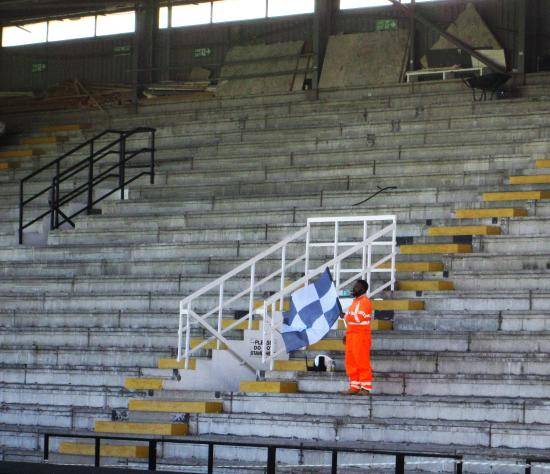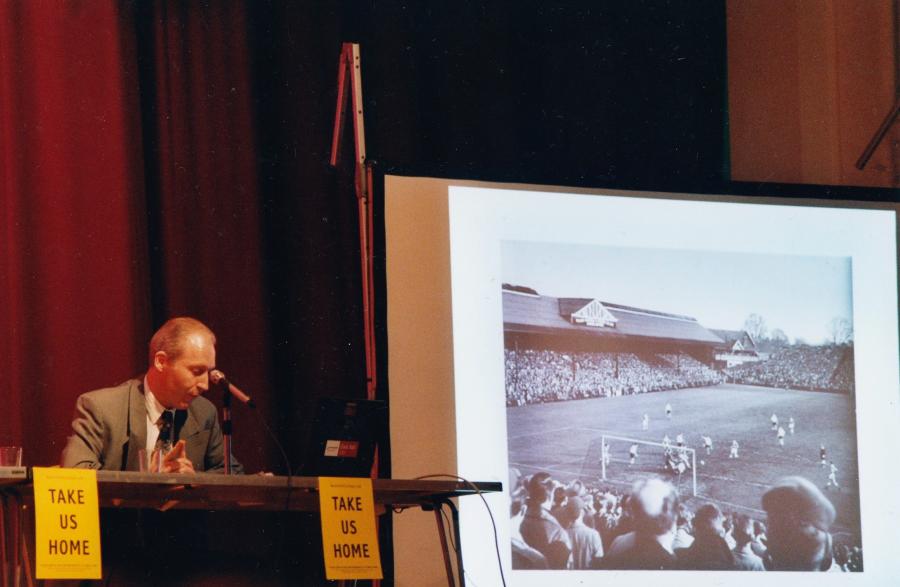Fulham began the 2019 festive season in the best possible manner with a 2-1 home victory over high-flying Leeds United, and ended it by putting Premier League Aston Villa out of the FA Cup.
Leeds can fairly claim to have been disadvantaged by losing Pablo Hernandez in the third minute, and then conceding the softest of penalty awards. Though Fulham’s Marek Rodak was the busier goalkeeper, the Leeds players failed to impress and their demeanour was often peevish. They did equalise in the 55th minute when Rodak made a rare error, failing to hold Eddie Nketiah’s shot and presenting Patrick Bamford with a simple goal.
The visitors were on level terms for a quarter of an hour. Then Ivan Cavaleiro’s glorious shot was saved by Kiko Casilla, and from the resulting corner Ben White courageously blocked an Aleks Mitrovic thunderbolt, only for Josh Onomah to blast in the rebound. Oddly the Fulham website deemed it a scrappy goal – most unfair on Onomah, who had been heavily criticised in some quarters. Let’s hope for a glut of scrappy goals like that in 2020 from Josh and his colleagues.
The Christmas matches brought further cheer with a spirited 3-3 draw at Luton, and a 1-0 home victory over Stoke City - three of Fulham’s four goals coming from Bobby de Cordova-Reid. But the satisfaction of the latter victory was undermined by the team’s excessive caution in the second half. Only an athletic save by Marek Rodak denied City a point.
2020 began with a visit from Reading. The publicists promised a Battle Royale and the first quarter of an hour saw the home forwards charging at full tilt. Then a surprise attack caught our defence off guard if not AWOL. (OK, no more military metaphors.) Fulham only sparked into life after Charlie Adam had increased Reading’s lead. Substitute Ivan Cavaleiro reduced the deficit, and in added time goalkeeper Rafael Cabral fingertipped Mitrovic’s header over the bar. But overall the Whites gave a lacklustre display.
Scott Parker reminded his players afterwards that they needed more than ‘flamboyant play, nice control of a football pitch, possession, chances’. He could have used the catchphrase of my youth ‘It’s goals that count’, an adage thrillingly confirmed by the defeat of Aston Villa.
Some Fulham supporters, perhaps sated with football, gave the Cup match a miss. The soporific first-half suggested that they had made the right decision. Villa had not put out their strongest side and Parker had rested some key players, introducing newcomer Michael Hector in defence and trying an experimental front line. The only real action came just before the interval when Rodak saved from Anwar El-Ghazi.
As so often, Fulham came alive in the second half and took a deserved lead in the 54th minute, Anthony Knockaert cutting in and scoring on the fringe of the penalty area. Villa’s response came when Jonathan Kodjia lobbed the ball over Rodak, freeing El-Ghazi to equalise. In the 72nd minute Harry Arter replaced Kevin McDonald and almost immediately executed a strike to rival Knockaert’s. These exhilarating goals were in the best tradition of the FA Cup, and Scott Parker merits special mention for his uncannily prescient substitution.
Farewell to the Riverside
The gloom of the Reading result was matched by the weather; whereas the visits of Stoke and Villa coincided with bright sunlight, dazzling spectators in the Johnny Haynes Stand, who were no longer shielded by any structure on the riverside.

The defunct Riverside Stand holds special memories for some supporters. I sat there in the early days with my aunt and uncle (sadly both departed). Positioned by the Hammersmith End penalty area my Aunt Joyce was quick to condemn any official who judged a Fulham attacker offside or failed to award one a penalty. Finally, a Welshman sitting behind us made a bold suggestion to my uncle: “For Christmas could you buy your wife a copy of ‘Know the Game’, please.”
“I gave her that last Christmas,” was his truthful reply.
Another female supporter went further during a match, walking down the steps that led to the touchline and striding on the pitch to lecture the referee. Her husband followed her, though whether to support her or to remove her was unclear as the stewards belatedly reacted. The ref was, just the rest of us, merely amused.
On one occasion I was particularly pleased to see the Riverside Stand. In 2002 players and supporters were shipped off to Loftus Road, supposedly to allow Fulham’s ground to be transformed into a huge modern stadium, which would have entailed the destruction of the famous Cottage. Suspicions were aroused when the club started trumpeting the merits of ground sharing. Then it was rumoured that the redevelopment would cost £100 million, a strong hint that Fulham had another site in mind. Supporters were divided between the ‘Back to the Cottage’ group and those who felt that the club would retain its identity wherever it ended up. The decision rested with Mohamed Al Fayed, and fortunately he had an expensive change of heart, accepting the protestors’ plan for covering the terraces and enclosure of the old ground and installing tip-up seats.
On Saturday 21 August 2004 the sun beamed down on our return to Stevenage Road. The changes necessitated by the club’s Premier status had only slightly spoilt the look of the ground, and Craven Cottage itself stood proud – as did the Riverside Stand. The latter would survive for 15 more years. Now its demolition is almost complete, with Junior flagging the last farewell from the bare terrace.

The views expressed in this blog are those of the author and unless specifically stated are not necessarily those of Hammersmith & Fulham Council.
Want to read more news stories like this? Subscribe to our weekly e-news bulletin.

